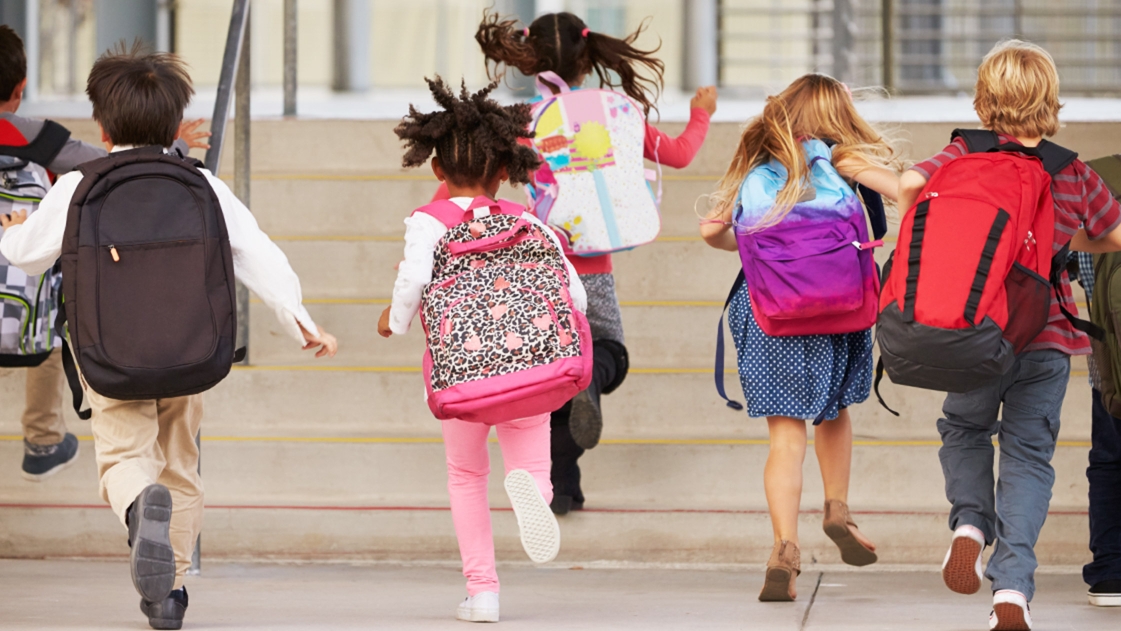The Importance of Transportation Planning in School Safety

Was there ever a time in your life that you walked to school? Do your children walk or ride their bikes to school? Depending on how old you are, the answer is probably “no.” Over the past 50 years, the number of school children that walk or bicycle to school has fallen from 50% to 13%. Much of this has to do with the changing development patterns in the United States, along with changes in school funding. In the early 20th century, schools were constructed within walkable neighborhoods, served by sidewalks, where private automobiles were much less common. In fact, 41% of students in 1969 lived within a mile of their school, an easy distance for most people to walk. However over the last few decades, districts have consolidated locations, new schools have been built on less expensive greenfield sites far from the neighborhoods where students live and are accessible only by car or bus. Auto traffic to schools has increased as a necessity but has also led to decreased safety for students walking around campuses.
In 1969, 41% of students lived within a mile of their school, an easy distance for most people to walk.
The most comprehensive way to improve safety around or near school campuses is to engage in programs that reduce the reliance on pick-ups and drop-offs. By increasing the number of students who can travel to school on foot, by bicycle, or by taking the school bus, districts can reduce the number potential vehicle conflicts that may exist near schools. Transportation planning looks to identify non-motorized connections, new mobility solutions, urban design characteristics, and funding opportunities that can make travel to school easier and safer without using a private automobile.
Creating alternate options for student travel
The Safe Routes to School Program, funded by the U.S. Department of Transportation, is used by transportation planners to promote walking and biking to school through infrastructure improvements, enforcement, education, and incentives. The improvements can be implemented by a variety of different agencies, including school districts, local governments, metropolitan planning organizations, or a department of transportation. OHM Advisors has been involved with a number of Safe Routes to School projects around the State of Michigan, including in Grosse Pointe, Novi, Farmington and Midland, with the goal of improving safety by giving student alternate options for travel.
Safe Routes to Schools projects can help address a variety of risks outside of automobile conflicts. There are environmental concerns related to vehicle emissions and air quality that have indirect impacts on students’ health, especially younger children. Each idling automobile waiting in a queue to drop off or pick up students can release between 50 and 100 pounds of emissions (CO2, NOx, VOCs, and particulate matter) into the atmosphere each school year, depending on the total idle time (U.S. EPA). Harmful emissions can stay near schools and be inhaled by students throughout the day, increasing adverse impacts on them. Incorporating walking, biking, shared rides, and bus transport can help reduce the environmental impacts of transportation and, in turn, help improve the health of students.
Safe Routes to School projects can be especially helpful for improving safety on school campuses and in the areas directly surrounding schools. School campuses can be retrofitted with infrastructure that improves the safety of pedestrians and bicyclists, while also encouraging students to use non-motorized transportation to get to school. Educational campaigns, events, and incentives can help encourage students and parents to try an alternate mode of transportation and reduce their reliance on single student vehicles.
“The most comprehensive way to improve safety around or near school campuses is to engage in programs that reduce the reliance on pick-ups and drop-offs.”
As motor vehicle traffic increases, drivers become more concerned about the safety of their children walking or biking to school and begin driving them to school. As more parents do this more traffic is added and the cycle is increased. Smarter transportation planning and thinking about Safe Routes to School early on can help break this cycle, improve safety outcomes and encourage other modes of travel to school. As our cities grow and traffic congestion increases, more and more municipalities are looking for additional ways for their residents to get around. Safe Routes to Schools projects are a small piece of the puzzle but add valuable transportation amenities that increase the quality of life of school district residents.
